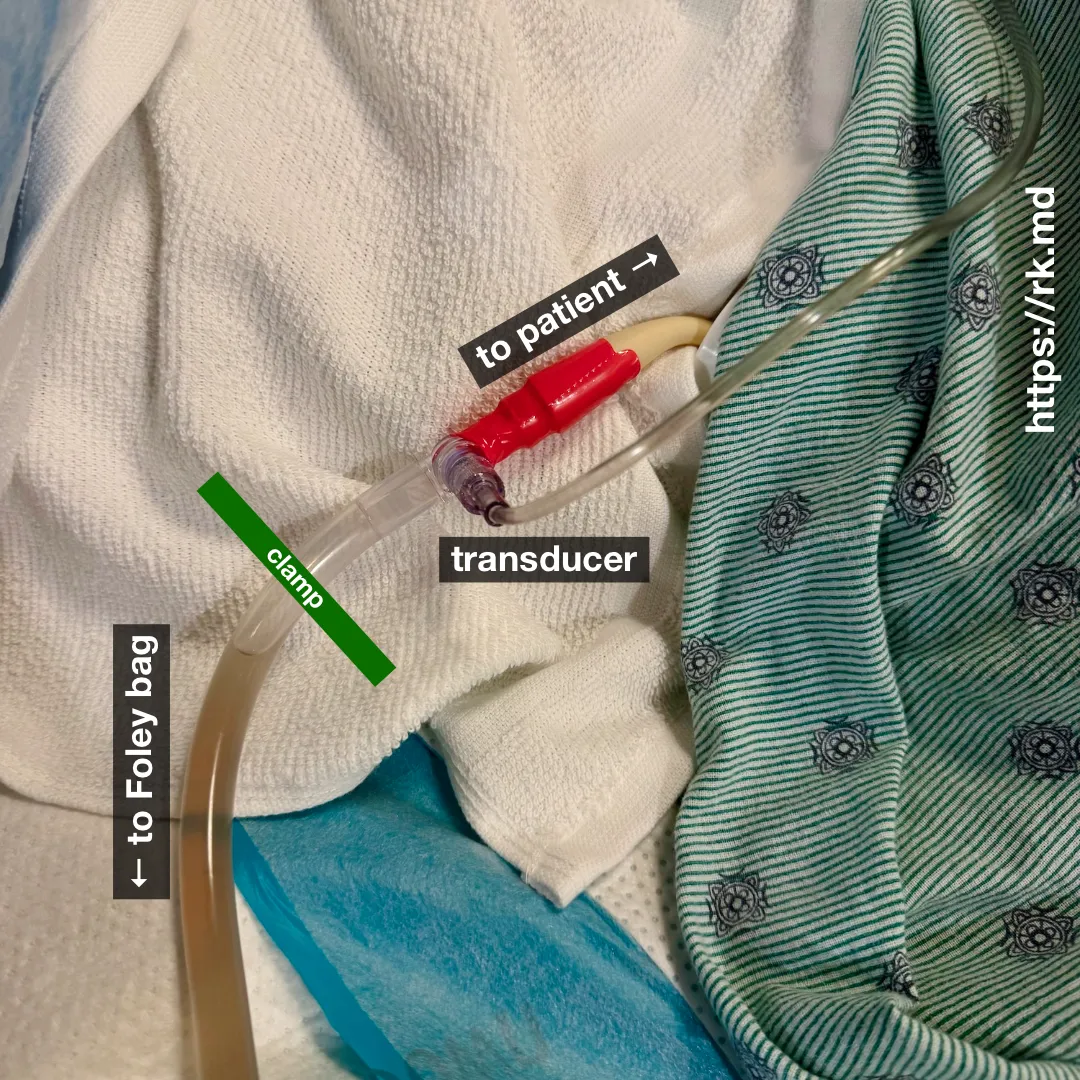Intraabdominal hypertension (IAH) and abdominal compartment syndrome are defined as sustained intraabdominal pressure (IAP) ≥ 12 mmHg and > 20 mmHg with new organ dysfunction, respectively. This can be challenging to diagnose in patients who are pregnant, obese, or with ascites. Bladder pressure from a Foley catheter can be used to estimate the IAP due to its simplicity and high accuracy. In this case, the bladder serves as a conduit for transmitting the IAP. The musculature of the bladder itself does not influence the pressure recorded.
Measuring bladder pressure:
- Clamp the Foley
- Clean the sampling port and attach the transducer tubing
- Zero the transducer at the level of the pubic symphysis
- Instill 20-25 mL of fluid into the bladder
- Allow 30 seconds for equilibration and detrusor muscle relaxation
- Measure the bladder pressure at end-expiration in the supine position (ideally, the patient is completely relaxed/paralyzed)
- Unclamp the Foley and subtract 20-25 mL from the overall urine output.
Remember that the abdominal and thoracic compartments can easily influence each other. For example, elevated intrathoracic pressure due to high airway pressures during mechanical ventilation can affect intraabdominal pressure. The two compartments should be thought of as a continuum. If I’m worried about IAH, besides abdominal decompression (e.g., NG tube/rectal decompression, decompressive laparotomy, etc.), I’m also considering contributions from the thoracic cavity!
Drop me a comment with your thoughts, experiences, and questions!






